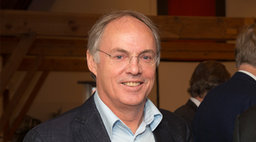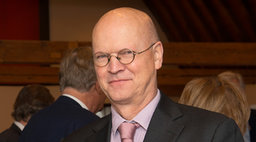Dutch icons
The Dutch Parliament declared two Life Sciences & Health projects as National Icons. The National Icons are groundbreaking projects that contribute positively to societal challenges the world faces.
Hans Clevers’ groundbreaking stem cell research
Hans Clevers and his research group of the Hubrecht Institute have developed a method to grow small amounts of stem cells from tissue of healthy people or patients into endless numbers of cells. Together with the Royal Netherlands Academy of Arts and Sciences (KNAW) and University Medical Centre Utrecht, Clevers has set up a non-profit organization, Hubrecht Organoid Technology (The HUB), to further develop and commercialize the method.
More information: hub4organoids.eu/
Gijsbert van de Wijdevens’ Bioneedle
Every day, more than 18.000 children die because they are not protected by vaccines for deadly diseases. Bioneedle addresses this global health problem and is the first vaccination system that enables needle free vaccination and uses freeze dried vaccines. With this technology needle-related incidents are eliminated and distribution is much easier, because there is no need for a cooling system. This technology can speed up the vaccination process tremendously, especially in developing countries.
More information: www.bioneedle.com/
Interview with Hans Clevers
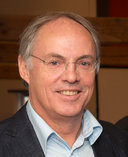
What does your project bring to the Life Sciences & Health sector?
We have a unique method to culture stem cells and grow them into ‘mini-organs’ (organoids) without changing the cells. We are the first to grow endless amounts of healthy cells or tissue from a small number of stem cells. This offers numerous possibilities. We can grow healthy stem cells into healthy organs that can be used for organ transplantation. Organ donation will no longer rely on organs from deceased people, but organs can be grown from tissues from living subjects. In the short term we can grow tissues from patients and use them to test series of medicines. In this way patients receive personalized treatments that work best for them. We are the first in the world to create a method that can grow so many cells without changing the culture.
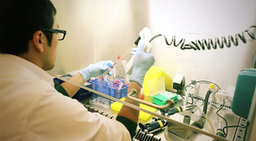
What does the status of National Icon mean for you?
In the scientific world people know who we are and what we do. If we want to bring our method outside the lab, and into the clinic, it is important that people outside the scientific community know us as well. Being a National Icon opens doors to insurance companies, ministries, hospitals. This helps us roll out our method to the clinic. It can also help us finding new ways of funding, for instance from insurance companies. Our current project costs millions; bringing this to the clinic will cost tens of millions.
What can we expect from you in the future?
On the short term we improve the quality of care and treatment for patients with hereditary conditions and certain types of cancer. With our method medicines can be tested on patients’ cells, before they receive the treatment. These personalized medicines will greatly increase the chance of providing a working treatment at once. With over 100.000 new cancer patients every year this can have an enormous impact. On the long term we can replace organ transplantation with cultured stem cell transplantation. In the future we expect to be able to develop pancreas, liver, small intestines, colons and lungs. With our method we can highly improve the quality of care, whilst at the same time lowering healthcare costs.
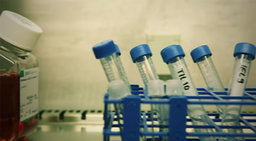
What are your challenges?
At this point our efforts are mainly scientific. Challenges in research are different from the challenges that we will face when we want to commercialize our method. We will have to deal with regulatory affairs regarding ethics, privacy etc. We will also have to convince people outside the scientific world that our product is interesting. Luckily there is already a lot of interest, mostly from international pharma companies.
What drives you to proceed with this project?
Mainly curiosity. And of course it would be great to see our research results finding their way into society at least once in my lifetime. In the end I think that would be a dream of every scientist.
Interview with Gijsbert van de Wijdeven
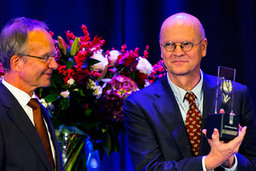
What does your project bring to the Life Science & Health sector?
Bioneedle is an invention that can have a large impact on Global Life Science and Health sector. This technology is a new pharmaceutical technology, that can change the vaccination process as we know it. Vaccination is necessary to protect ourselves from different pathogens, but with the current vaccination system around 100 million people are not reached. I believe that Bioneedle is the answer.
What does the status of National Icon mean for you? How will this status help you?
I am proud to be one of the National Icons. I am not bound to a research institute, but I worked together with different universities, companies and governmental organizations during the development process. Although this is an alternative way of performing research, it was quite successful and it feels good to get recognition for this. At the moment I can not foresee what the status will bring me, but I will have support for three years from dedicated ministers; Edith Schippers and Lilianne Ploumen. They can help me with expanding my international network and making contact with different international organizations. This is necessary because Bioneedle tackles a global health issue.
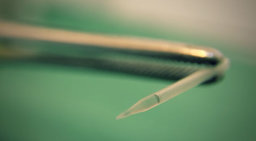
What can we expect from you in the future?
I hope only positive things. I will dedicate myself to make Bioneedle a success and make vaccination possible for everybody. Especially the millions of people that are not reached with the current system. I would also like to develop more applications for Bioneedle, because needles are not only used during vaccination.
What are your challenges?
There are different challenges, but they are all manageable. Funding and upscaling of the production process will be challenging, but it is certainly feasible. At the moment I also have to talk with people who will be using this system. They are able to give me insights in how Bioneedle will be used. I can use this information to make the system user friendly in difficult situations.
What drives you to proceed with this project all these years?
I feel the responsibility to help the people who die every day, because they don’t get proper vaccination. Bioneedle is the solution for this problem. Another reason is the intellectual challenge of creating solutions for healthcare problems.
